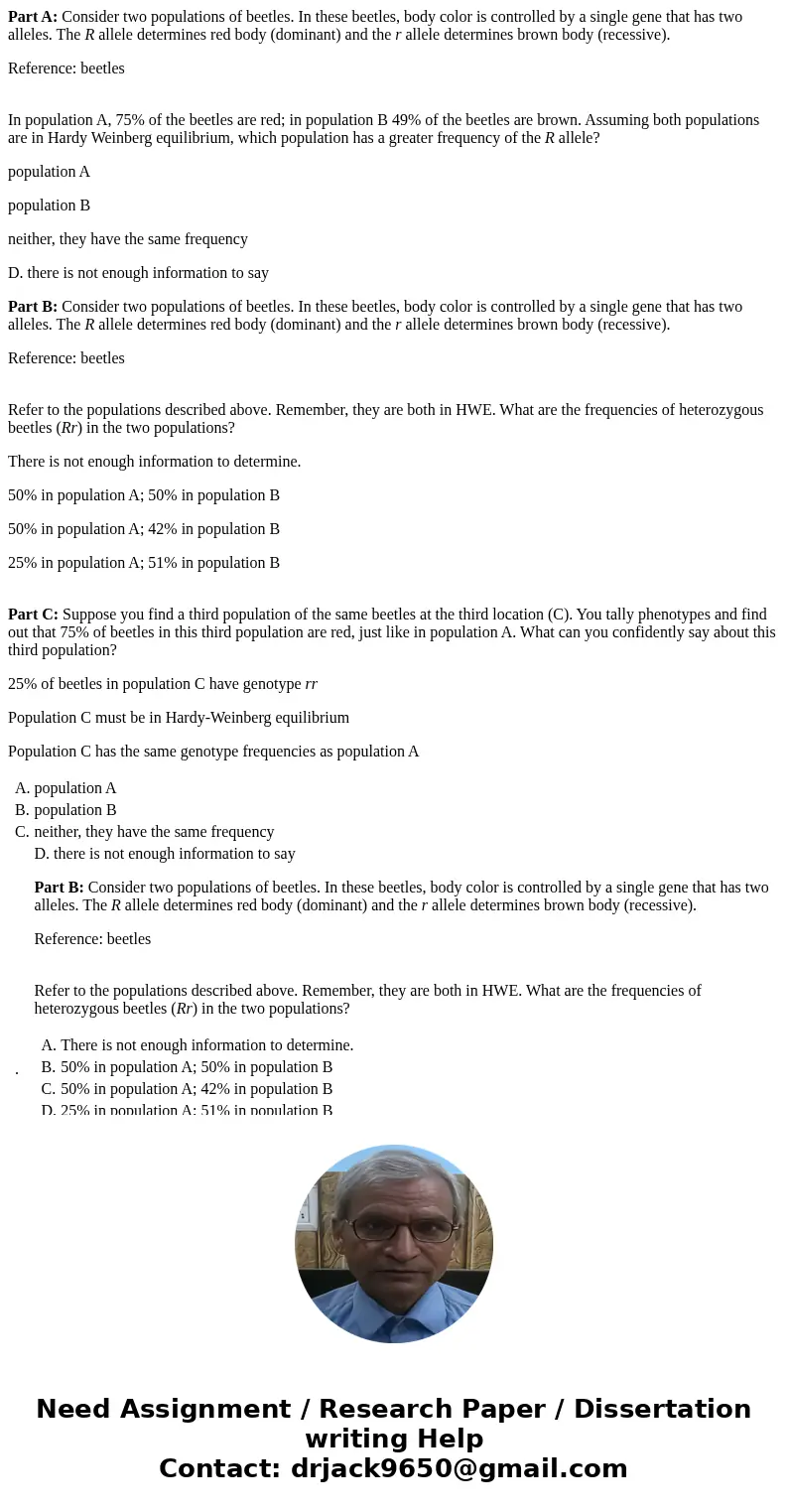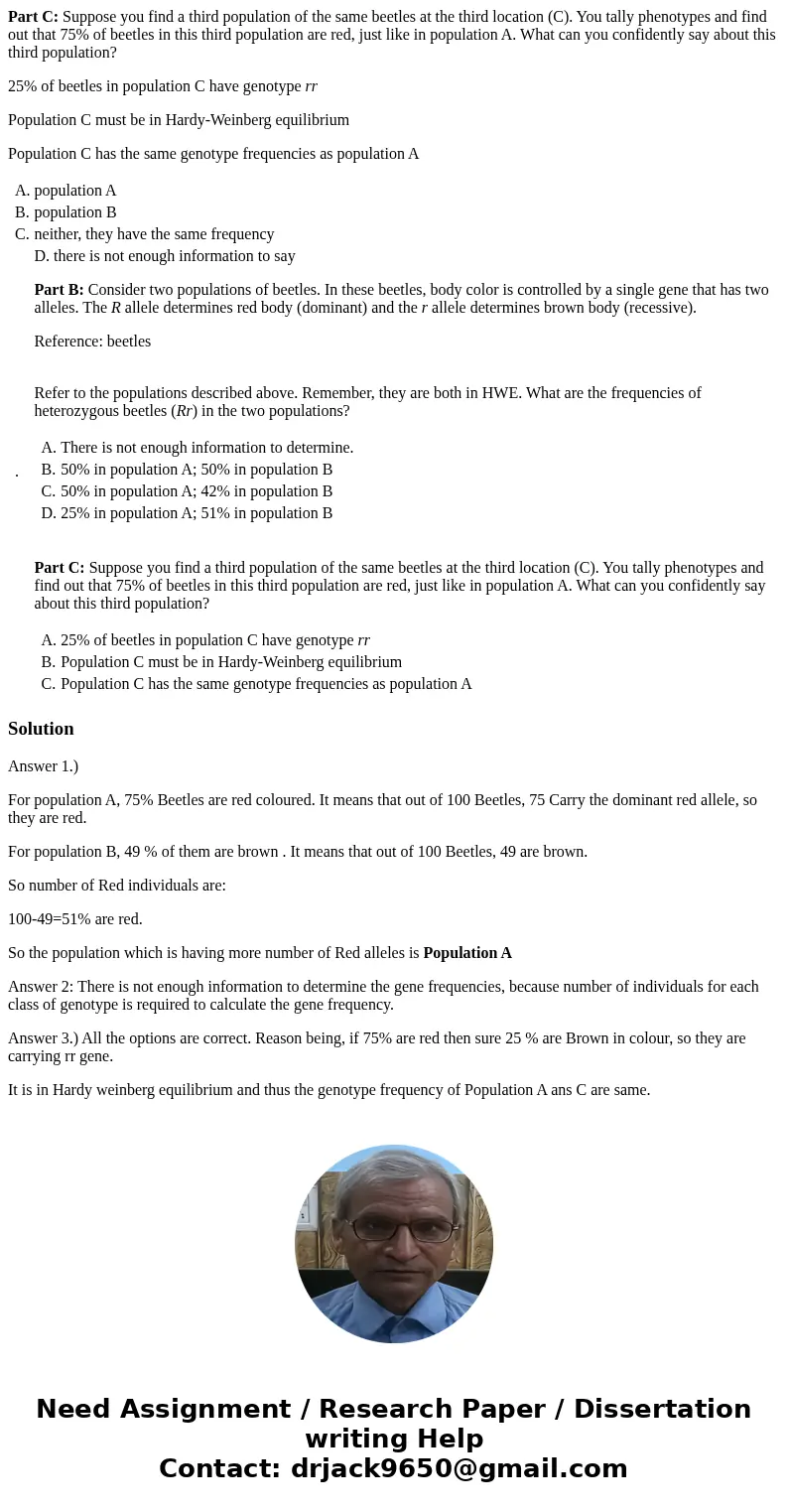Part A Consider two populations of beetles In these beetles
Part A: Consider two populations of beetles. In these beetles, body color is controlled by a single gene that has two alleles. The R allele determines red body (dominant) and the r allele determines brown body (recessive).
Reference: beetles
In population A, 75% of the beetles are red; in population B 49% of the beetles are brown. Assuming both populations are in Hardy Weinberg equilibrium, which population has a greater frequency of the R allele?
population A
population B
neither, they have the same frequency
D. there is not enough information to say
Part B: Consider two populations of beetles. In these beetles, body color is controlled by a single gene that has two alleles. The R allele determines red body (dominant) and the r allele determines brown body (recessive).
Reference: beetles
Refer to the populations described above. Remember, they are both in HWE. What are the frequencies of heterozygous beetles (Rr) in the two populations?
There is not enough information to determine.
50% in population A; 50% in population B
50% in population A; 42% in population B
25% in population A; 51% in population B
Part C: Suppose you find a third population of the same beetles at the third location (C). You tally phenotypes and find out that 75% of beetles in this third population are red, just like in population A. What can you confidently say about this third population?
25% of beetles in population C have genotype rr
Population C must be in Hardy-Weinberg equilibrium
Population C has the same genotype frequencies as population A
| A. | population A | ||||||||||||||||||||||
| B. | population B | ||||||||||||||||||||||
| C. | neither, they have the same frequency | ||||||||||||||||||||||
| . | D. there is not enough information to say Part B: Consider two populations of beetles. In these beetles, body color is controlled by a single gene that has two alleles. The R allele determines red body (dominant) and the r allele determines brown body (recessive). Reference: beetles
|
Solution
Answer 1.)
For population A, 75% Beetles are red coloured. It means that out of 100 Beetles, 75 Carry the dominant red allele, so they are red.
For population B, 49 % of them are brown . It means that out of 100 Beetles, 49 are brown.
So number of Red individuals are:
100-49=51% are red.
So the population which is having more number of Red alleles is Population A
Answer 2: There is not enough information to determine the gene frequencies, because number of individuals for each class of genotype is required to calculate the gene frequency.
Answer 3.) All the options are correct. Reason being, if 75% are red then sure 25 % are Brown in colour, so they are carrying rr gene.
It is in Hardy weinberg equilibrium and thus the genotype frequency of Population A ans C are same.


 Homework Sourse
Homework Sourse